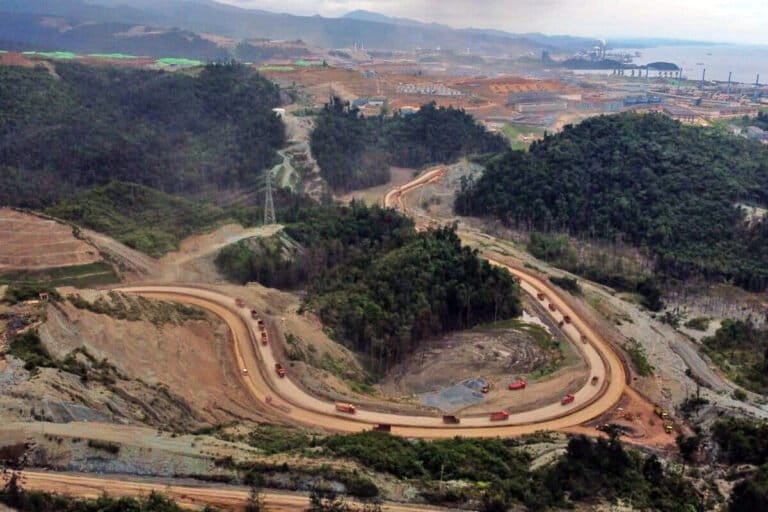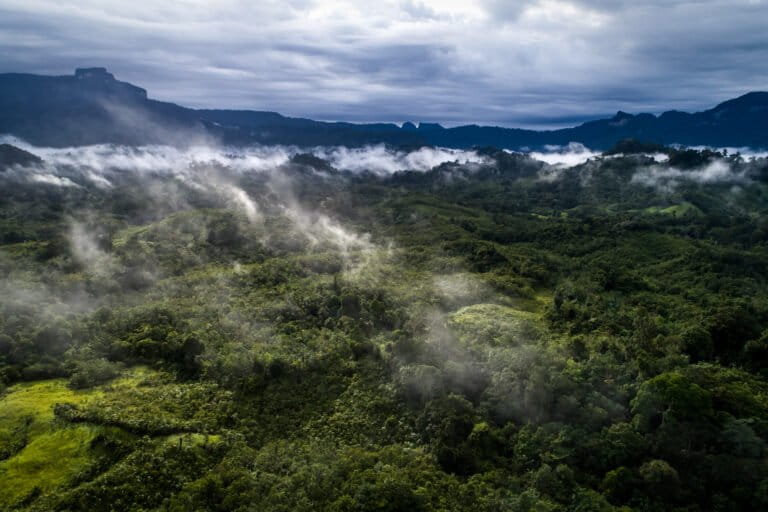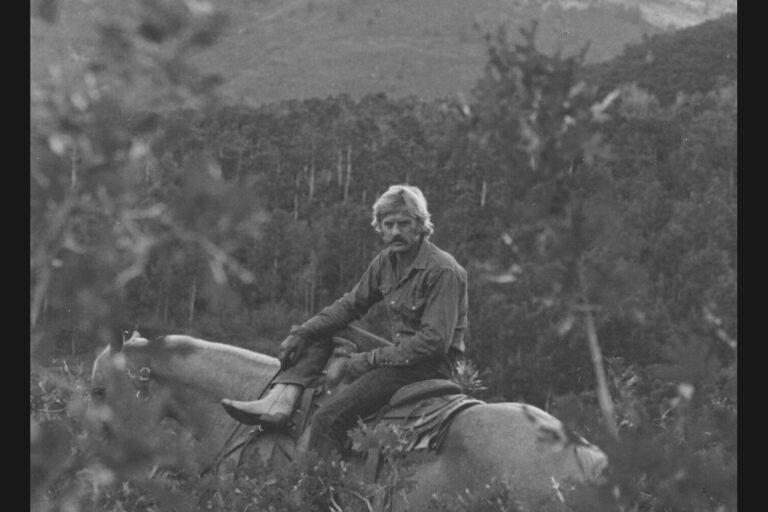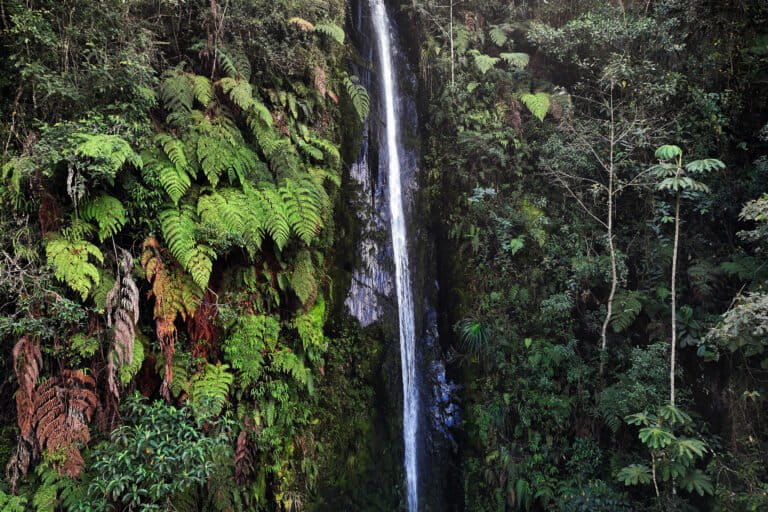- Costa Rican Indigenous leader Pablo Sibar Sibar talks to Mongabay about the Indigenous land recovery movement and the plethora of death threats he’s received for his work.
- As the country’s Indigenous Law states that non-Indigenous people are prohibited from owning land on Indigenous territories, Indigenous leaders have begun recovering lands themselves following state in-action. Today, nearly half of Indigenous land is in the hands of illegal landholders.
- Since 2019, two Indigenous leaders, Sergio Rojas Ortiz and Jehry River, have been killed in what Indigenous activists suspect were deliberate murders for their part in the land recovery movement.
- State prosecutors do not see a connection between the violence against Indigenous leaders and their land rights activism.
In a country often ignored internationally except when it comes to its bustling tourism industry and oceans, Costa Rica and its Indigenous rights record is receiving careful attention by the U.N. and a human rights commission. Amid a movement to recover territory from cattle ranchers and landholders, Indigenous leaders in the country are facing death threats, violence, and the inertia of the State.
Among the more violent aggressions were the assassinations of Bribri leader Sergio Rojas Ortiz in 2019 and Bröran leader Jehry Rivera less than a year later. Pablo Sibar Sibar (also known as Pablo Sibas Sibas) is among the Brörán Indigenous leaders who have received several death threats in past years. These range from WhatsApp voice messages to his personal phone number, cars chasing him down in the street, and messages on social media.
Investigations into these assassinations, and other cases of threats and attacks against Indigenous leaders, have either stalled or are seen as one-off situations. State prosecutors do not see a connection between the violence against Indigenous leaders and their land rights activism.
Cattle ranchers also report some Indigenous members burning down a house and killing cattle on contested land. Other farmers have reported being beaten in their home after refusing to leave the property located on Indigenous land, which they had previously bought by non-Indigenous third parties.
Read more: Sergio Rojas Ortiz, leader of Costa Rica’s Indigenous Bribri, slain by gunmen

Clashes between Indigenous communities and landholders, who are often cattle ranchers, go back over 40 years after Costa Rica passed the 1977 Indigenous Law. This law prohibits non-Indigenous people from acquiring or selling land on the country’s 24 Indigenous territories and obliges the State to return this land to Indigenous communities. But today, nearly half of the land is still in the hands of non-Indigenous landholders, mostly used for cattle ranching. A 2015 national forestry strategy, part of REDD+, identified cattle ranching as one of the major drivers of deforestation and forest degradation. Currently, the industry covers approximately 20% of the country, stretching from its border with Nicaragua down to Panama.
The same Indigenous Law says nothing about compensation or aid to farmers to leave the Indigenous territories, many of whom have been there for generations.
In retaliation, and in the absence of a State regulator to help redistribute these lands, Indigenous communities began a movement to recover their territory by occupying land and evicting illegal landholders themselves in 2010.
“The people that recover land have certainly faced threats. They have faced death,” says David Solís Aguilar, a geographer specializing in the territorial rights of Indigenous people with The Centre for Cultural Research and Development at Costa Rica’s State University. “But the recovery of land in Costa Rica is an exercise that’s not only legitimate, it’s also legal.”
In 2015 the Inter-American Commission on Human Rights told the Costa Rican State to adopt precautionary measures to protect Indigenous leaders. In December, Fransisco Calí Tzay, the UN Special Rapporteur on Indigenous Rights, repeated this call by saying protections are “urgently needed.”

However, Indigenous environmental activists say these calls are being ignored. Earlier this year, Costa Rican President Rodrigo Chaves Robles refused to ratify the Escazú agreement, a regional treaty specifically created to provide protective mechanisms for environmental defenders.
Solís Aguilar said this decision not to ratify the Escazú agreement sends the message that “impunity will be perpetuated,” he tells Mongabay by video call from Guatemala.
Some hope was renewed among human rights advocates in October when Costa Rica’s Constitutional Court struck down a request to declare parts of the 1977 Indigenous Law as unconstitutional.
To dive deeper into the land recovery movement in Costa Rica and the death threats Indigenous leaders who are part of this process are facing, Mongabay interviews Pablo Sibar Sibar, coordinator of the National Front of Indigenous Peoples (FRENAPI). Sibar has long been leading the land recovery process in the Terrabá territory of southern Costa Rica for the past 40 years. Speaking from one of these parcels of recovered land, he talks about the death threats he’s received, the legal process of returning ancestral lands to Indigenous communities, and peaceful activism.
The following interview has been translated from Spanish and edited for clarity. The information and views expressed in this Q&A are those of the interviewee, not necessarily Mongabay.

INTERVIEW WITH PABLO SIBAR SIBAR
Mongabay: What is the situation like for Indigenous communities and the land recovery movement in Costa Rica at the moment?
Pablo Sibar Sibar: Well, it’s exactly the same as always. The government does not pay attention and does not comply with anything the U.N. or the national legislation say [concerning the land restoration issue]. Things remain the same. All we have to do is to continue recovering our land.
The biggest threat we currently face is that the farmers and cattle ranchers (who do not live on the territory but own the farms), arrive with a lot of people to beat us and take us out of their farms when there is a land recovery effort.
Mongabay: What does the land recovery process consist of? Are people literally going into these territories and just taking back the land?
Pablo Sibar Sibar: Yes, that’s right. We go in to retake the land. First, we tell the usurper [farmers, cattle ranch owners] to come and take their animals, the cattle that they have there. We then give them a deadline. And at that moment [in the process] they get very violent because we usually arrive with a large group of people who want to get rid of them.
However, the farmers accuse us of being the ones who incite violence and being the violent ones. They say that we are the usurpers. That we are stealing their lands. However, these lands have been recognized as Indigenous lands since 1939 [the first time the state recognized Indigenous territories in the country], so it is the Costa Rican State is the one that has not complied with the processes.
Mongabay: After all your years defending Indigenous land rights and taking part in this movement, how much land has your organization recovered?
Pablo Sibar Sibar: I would say that from 2010 to 2022, we have recovered about 12,000 or 13,000 hectares [about 29,650 to 32,120 acres] in all the territories that are part of our recovery process, which are Salitre, Cabagra, Térraba, China Kichá, and Guatuso. These are the five territories that are in the process of recovery.
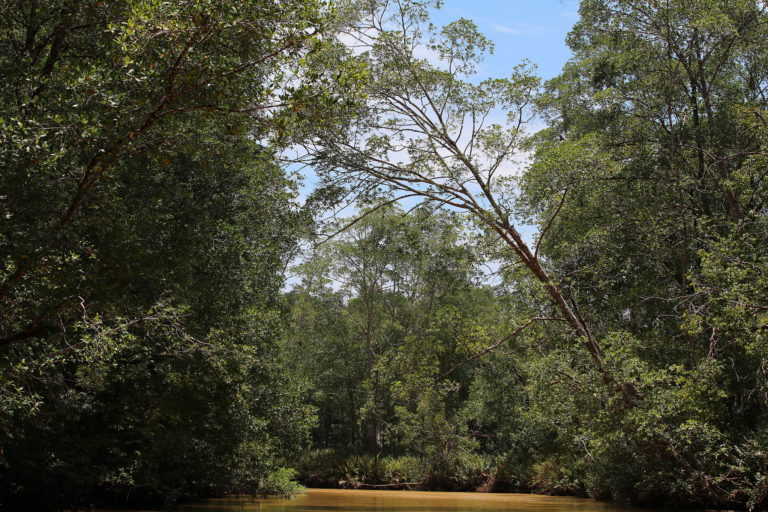
The farm that I’m on right now consists of one thousand hectares (about 2,470 acres) of recovered land. Before there were only cattle, there was only pasture. Today this farm has about 80 families living here. There is life, there is hope and there is a different kind of joy. When we came here, it was initially a very lonely farm, with only sun and solitude. Today, this farm has changed enormously, it has many animals that have started to arrive and very happy families, very happy children. The recovery of Indigenous lands brings us happiness. This is why we recovered it: thinking about our future generations.
[Trully], Indigenous people barely have land. It said that in the Indigenous territory of Térraba there were 9,355 hectares (roughly 23,117 acres) of land, but in reality, we didn’t have a place to plant one yuca [cassava]. Today, after this recovery process, we have enough place to produce yuca.
For example, we lived through the [COVID-19] pandemic here but we didn’t feel the effects of the pandemic ourselves. This is among the great advantages of our lands, and that’s why we are willing to continue with the struggle even if we lose our lives.
Mongabay: Many Indigenous activists say investigations into the threats and murders against Indigenous leaders are inadequate and fail to look at a link with the land recovery movement. How do you believe the investigation into the murder of the two Indigenous leaders, Sergio Rojas – who was your companion – and Jhery Rivera, are being handled?
Pablo Sibar Sibar: Sergio Rojas was a human rights defender and great friend of mine since we began this struggle together. And then, some farmers had him assassinated. What exactly happened is that they paid to have him assassinated.
The murder happened in March 2019. He had gone down to file a complaint with an agrarian lawyer, not a criminal lawyer, then went back to his house. He lived alone. At 9 o’clock at night, he was murdered. According to the Prosecutor’s Office, the whole investigation process has been focused on who the murderers were. It has not focused on those who planned to get him killed. What we have been asking is that the Prosecutor’s Office investigates who the intellectual actors are, and who are the ones who carried out the process to have him murdered.
The State does not assist in this process. What we have been told is that we do not have the right to recover the land and that it is the State that has to undertake these actions. But the State hasn’t done anything for the past 40 years.
The Prosecutor’s Office was going to file the case away, but the United Nations rapporteur on the rights of Indigenous peoples asked the Costa Rican State not to, so it is still under investigation.

Mongabay: You have received death threats in relation to your work as a defender of Indigenous land rights. Can you explain a little more about what these threats consist of?
Pablo Sibar Sibar: When they assassinated Sergio, [the murders and actors] said they believed that everything was going to stop. But [the land recovery process] is not a single process, there are many of us who are part of this process.
When they saw that nothing changed with the assassination of Sergio, I received threats that Pablo should be assassinated. Me. I have been chased by cars. Someone has tried to run me over. I have been beaten. On social media, people always say that Pablo should disappear, that he should be thrown into the river with a stone, and that he should be shot with a bullet.
I have presented to the Prosecutor’s Office a whole file, I have taken pictures, and compiled proof from Facebook and personal WhatsApp messages. I have told and shown them everything. Even the messages come with the name of the person issuing all the threats. And nevertheless, the Prosecutor’s Office says that there is no evidence and files them away.
Mongabay: What are the obstacles Indigenous people face in getting access to justice and reparation mechanisms?
Pablo Sibar Sibar: The Attorney General’s Office doesn’t take our complaints seriously, and when they do receive them, they always file them away and there is no follow-up to those complaints. This judicial power should be the one that deals with indemnifications or expropriating the Indigenous lands since all the farmers are illegal on our lands. However, the Attorney General’s Office doesn’t do it.
[Indigenous people] have enough legislation in this country, there are many papers that talk about Indigenous rights, but they are not complied with. And since Costa Rican State does not comply with the processes that they themselves made, or the in-laws and decrees, we will recover our own lands ourselves, because we must continue surviving. If not, we are going to disappear as a people, [as a culture].
Mongabay: You have worked as a human rights defender since the 80s and are known for your strategies of peaceful activism. What exactly does this consist of?
Pablo Sibar Sibar: We Indigenous peoples are peaceful. We have endured all the invasions of the past 500 years, and we are still surviving.
Now, the State recognizes our rights, those rights are on paper, and they’re out in the world. It is said that Costa Rica is a country that is a defender of human rights, a protector of human rights, that it is a country where there is no violence. And of course, there isn’t violence like that in Guatemala, Colombia, or Mexico, but the violence is very subtle.
It has been the violence of making us invisible, silencing us, and not allowing us to speak. When we started to fight and say that Costa Rica is a violent country, Indigenous people were murdered.
Many years later, Sergio Rojas appeared, followed by myself and a few others. We began to say, “well, if Costa Rica has a law that says that the lands are ours and that we have the right [to live here] and nobody else can inhabit it, nobody except Indigenous people, we will start being vocal about it.”

However, in those first 30 years, the State did not pay attention and ignored us. This process has primarily been a dialogue, to talk and to make the State understand our struggles. It was finally in 2010 that we began the recovery process and recovered our land. And now, the State says that we are being violent.
However, our struggle has always been peaceful. Every time my group goes to protest on the land, all the aggressions have been suffered by us. There is not a single farmer who has been attacked by us. However, the aggressions are carried out by the farmers, the usurpers, and by the Attorney General’s Office which does not attend to our reports.
However, the [land recovery] process continues to be a process of dialogue, a process of non-violence, and a process of saying the land is ours. That’s how we are, really. That is to say, it is a peaceful process but with a lot of strength. We will continue to try to recover our land and we will continue to take these actions if the Costa Rican State does not comply with what it must do.
Banner image: Pablo Sibas Sibas delivering a testimony at the HRD Memorial Vigil in Dublin, during the Front Line Defenders Dublin Platform 2022. Image by Kamil Krawczak.
Related listening from Mongabay’s podcast: We look at how the Shuar Indigenous community in Ecuador recently won a major victory to protect its ancestral territory of Tiwi Nunka Forest from cattle ranchers, loggers and miners. Listen here:
FEEDBACK: Use this form to send a message to the author of this post. If you want to post a public comment, you can do that at the bottom of the page.







